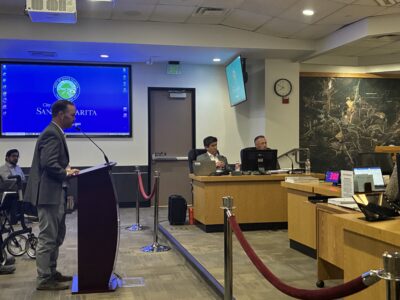As a state with a deeply ingrained car culture, California often ranks as one of the deadliest states for pedestrians. According to the Fatality Analysis Reporting System (FARS) managed by the National Highway Traffic Safety Administration, more than 1,100 pedestrians died on California roads and streets in 2023. The city of Oakland alone saw 52 pedestrian injuries and fatalities in 2022. The Golden State is far from being safe for walking.
In recent years, lawmakers and urban planners have been trying to make California a more pedestrian-friendly state with initiatives such as AB 2147, better known as the Freedom to Walk Act. Governor Gavin Newsom signed AB 2147 into law in 2022; it essentially eliminated traffic citations for jaywalking by directing law enforcement officers to only detain pedestrians when they endanger traffic. More pedestrian-friendly efforts are being managed at the municipal level; for example, over 60% of daily commuters in Berkeley do not drive thanks to an excellent public transportation system.
Pedestrians should not fear for their safety in California. Various statutes and rules have been implemented since the 20th century to improve walkability, including right-of-way provisions. Population density and suburban sprawl are challenging in this regard; nonetheless, pedestrians should remember that they have rights and legal recourse when they are involved in road traffic accidents.
Liability in California Pedestrian Accidents
Liability can impact anyone who travels on California’s roads, streets, freeways, special lanes, and sidewalks. Let’s say a Ford Explorer jumps the sidewalk curb and runs over a pedestrian because the driver was distracted by a WhatsApp group chat. California is an at-fault state, so the pedestrian can file a claim with the insurance company covering the driver for relief and compensation. The curb-jumping and WhatsApp distraction factors clearly shift liability to the driver, so the pedestrian can recover monetary losses for medical care, lost wages, and smashed smartphones.
To understand liability in right-of-way situations, let’s move the Ford Explorer accident to a crosswalk and remove the distraction. The traffic light is red as the driver is trying to turn right, and the pedestrian is behind a blind spot. If the pedestrian is hit, Chapters 4 and 5 of the California Vehicle Code would come into play. Chapter 4 lists the rights and duties of pedestrians, while Chapter 5 covers situations like yielding at intersections and crosswalks.
The brief accident description above would not allow a determination of liability. The determination must involve an accident report and investigation. The red light and the crosswalk are major factors, but there may be others. Was there a sign prohibiting turning right on red? Was there a traffic signaling device giving the green light to foot traffic? Did the pedestrian properly approach the crosswalk, or did she jaywalk diagonally towards the middle of the street?
We know from the aforementioned Freedom to Walk Act that the pedestrian will not receive a citation for jaywalking; however, insurance company attorneys and personal injury lawyers would examine the accident in more detail to determine liability. When pedestrians ignore the words, symbols, and countdown timers of crosswalk traffic lights, the burden of liability softens for drivers in accident situations.
Personal Injury Claims in California
Protecting your pedestrian rights in California should go beyond filing insurance claims. The best course of action is to contact a personal injury law firm soon after the accident, ideally before making a claim with the insurance company. Personal injury lawyers can guide you through the complexities of liability, gather evidence, negotiate on your behalf, and take your case to court if necessary.






